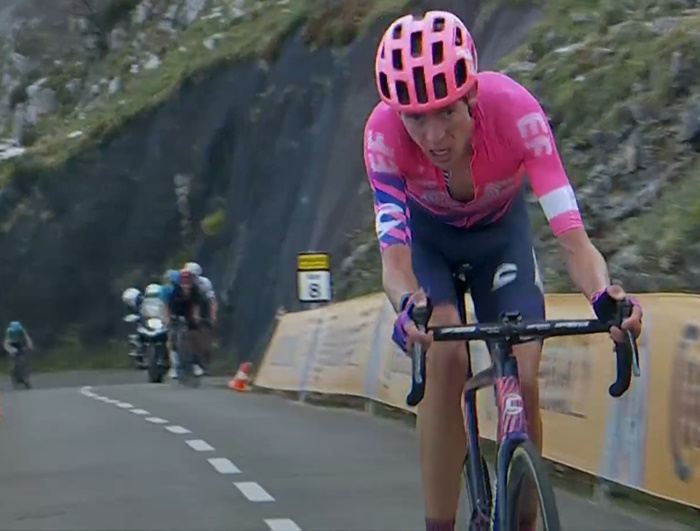
Let me tell you a story about two Grand Tour winners and a lad from Preston who sometimes stays up too late because he wants to watch the darts.
There’ll be a slight whistle-stop quality to much of this recap because I’ve got two weeks of racing to get through. I’ll slow down when we get to the Angliru though.
Everyone slows down on the Angliru.
Welcome to the Vuelta
All three Grand Tours are decided by some combination of mountains and time trials, but despite that surface similarity, each has its own distinct character.
The Giro d’Italia tends to favour a slow build, for example. This means everyone’s more invested in things by the time the significant action finally takes place. This way of shaping the route tends to bring quite a bit of seemingly inconsequential racing and then huge memorable big moments, like Chris Froome’s fully bonkers race-winning attack in 2018.
This year’s Giro took about two and a half weeks to really get going. The 2020 Vuelta a Espana, in contrast, went all-in from day one.
The race began with a brutal day of climbing in the Basque Country. While it only actually happened like that because they’d lopped off the opening three stages in the Netherlands, it felt like the purest of starts for a race that typically throws in as many uphill finishes as the other two Grand Tours combined.
Maybe this is the way forward though, because it certainly made for a dramatic opening. Last year’s winner Primoz Roglic took the stage, while the greatest stage racer of his generation lost 11 minutes.
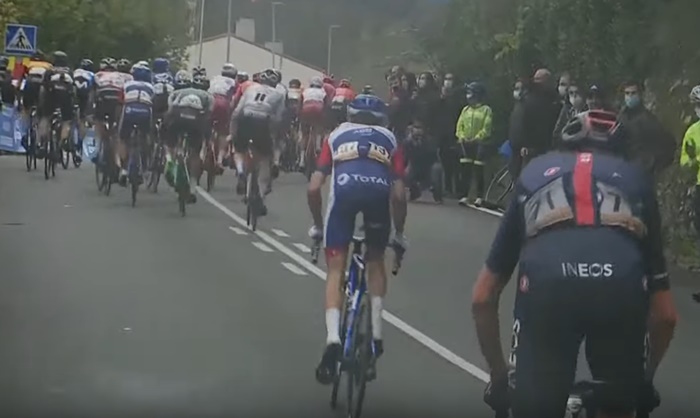
Any thoughts that Chris Froome might have pulled top form out of his arse were dispelled on the penultimate climb when he lost touch with the front group without any of his team-mates feeling moved to help him.
Froome is basically here for a polite send-off from Ineos before moving to Israel Start-Up Nation next season.
Thibaut Pinot lost 10 minutes too, which was rather more of a surprise. The Frenchman then lost 15 minutes on Stage 2 and promptly pulled out, citing ongoing back problems.
Roglic’s margin of victory was only one second from five other riders, but the time gaps grew after that.
The Vuelta really doesn’t piss about. Just one day and 173km into the race and we were already down to just 16 riders within a minute of the leader.
By the end of Stage 2 that number was down to eight with Tom Dumoulin the highest profile name to fall out of the running after more Basque brutality.
The Dutchman would eventually abandon after Stage 7, having concluded that he’s basically knackered after quite a lot of racing within a short timespan.
Stage 3 was a summit finish and by the end of that one we were down to just six riders within a minute of Roglic.
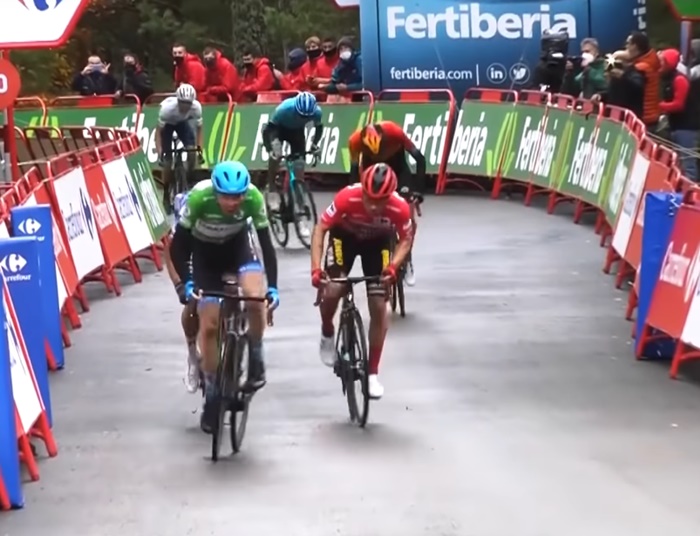
Dan Martin did his fast uphill finish thing to win. He, Roglic and last year’s Giro d’Italia winner Richard Carapaz seemed a notch above at that point in the race. But to resort to cliché for a moment, there was plenty of racing to come.
Stages 4 and 5 were uneventful from the perspective of the overall, which is something of a blessing when you’re trying to recap 12 stages without running to 2,000 words.
Stage 6 was a pretty big one though and shaped by the dire weather. Mere days after Jai Hindley and Wilco Kelderman had suffered at the Giro d’Italia through an inability to get dressed, Primoz Roglic lost 45 seconds after battling to get his jacket on mid-stage. This put Richard Carapaz into the lead, although it was striking that young British ganglatron, Hugh Carthy, was the fastest of the overall contenders, finishing seven seconds ahead of Carapaz.
Carthy, from Preston, was 11th at last year’s Giro and his ambitions know no bounds…
“One day, when I’ve finished racing, I want to go and watch the snooker World Championships,” he told Cycling Weekly earlier this year.
Dare to dream, Hugh. Shoot for the stars!
Stage 7 had Alejandro Valverde somehow in the break despite being 10th overall. He gained a minute, but you get the impression that at the age of 40, the overall contenders aren’t really that worried about him any more. While he’s still doing more than okay for a middle-aged person, that seems to have proven a reasonable position on their part.
Stage 8 was a big summit finish on the Alto de Moncalvillo, an 8km 9% climb.
Roglic and Carapaz proved themselves the strongest. The key moment between them came in the final kilometre when Carapaz attacked and for a moment the Slovenian looked like he couldn’t respond.
Roglic looked across at his rival suddenly moving away with an almost tangible air of resignation. But it wasn’t that he couldn’t respond. It was just that he was simply in no rush.
After a short freeze-frame pause, he calmly sidled across to his rival in a few pedal strokes.
And then he went.
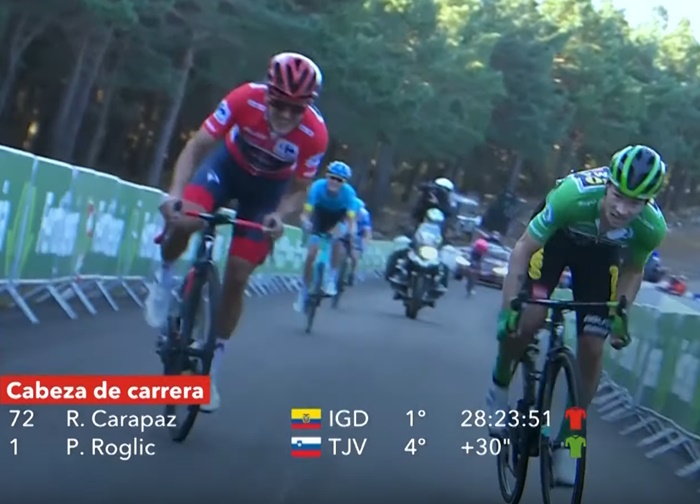
It is not nice to be attacked at the exact moment your own attack has just failed.
Just imagine the feeling. You’re giving it absolutely everything because you think you can put your man to the sword, then in less than a second you realise that (a) your maximum effort is not enough to get rid of him and (b) he’s just gone past you.
Roglic had 13 seconds by the line. At the time they felt like quite big seconds, but there’s been a ‘trading blows’ quality to this Vuelta and Carapaz would soon bounce back.
After Carapaz, it was six seconds to Dan Martin, a handful more to Aleksandr Vlasov and then just a few more to Carthy.
Stage 9 was a sprint finish and then Stage 10 was talked about as if it was going to be one too. But then it wasn’t.
In the end, it was this very cool fast uphill finish where the overall contenders ended up vying with the sprinters for the win.
Everyone had a chance. And Primoz Roglic won again. The Slovenian hung back and drafted other people until the last couple of hundred metres, at which point he surged out, stretching the peloton just enough to get a time gap to Carapaz.
That left the two of them on exactly the same time with Roglic technically ahead because you might as well reward the guy who keeps winning stages in these situations.
That set things up for two summit finishes over the weekend. Saturday finished with the 16km Alto de la Farrapona which hits double-digit gradients for 4km near the top, while Sunday finished with the even-more-ludicrous Angliru, which is 12.4km at an average gradient of 9.9% with several stretches over 20%.
As it turned out, Stage 11 was almost entirely inconsequential in terms of the overall. Probably because everyone was preserving energy for Stage 12.
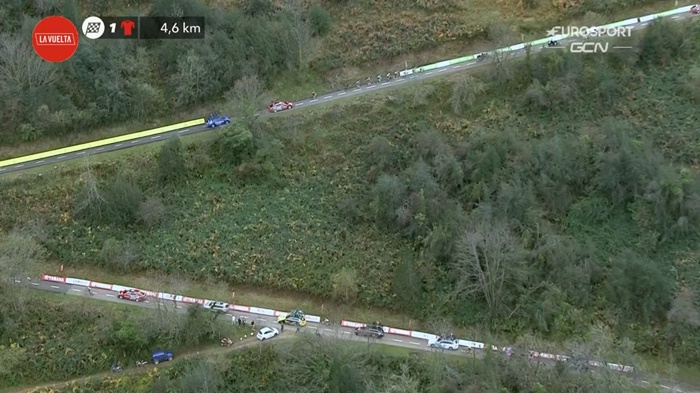
If you don’t really get gradients, all you need to know about the Angliru is that it’s one of the worst. Some climbs are steeper, and plenty are longer, but almost none are this steep for this long. In the second half the ‘easy bits’ are 10% – plenty steep enough to be considered the ‘hard bits’ on the vast majority of climbs.
Or as former pro David Millar put it: “As you get further into it, you don’t get any of those 10% holidays.”
Some people don’t consider it proper racing, seeing it as nothing more than a fitness test. There are no tactics really; you just do what you can do.
Personally, I find it absorbing. Many of us can identify with the sheer battle to get up a climb far better than the usual racing where they’re timing their efforts and choosing opportune moments to attack.
The Angliru is brutal and simple and it has its place.
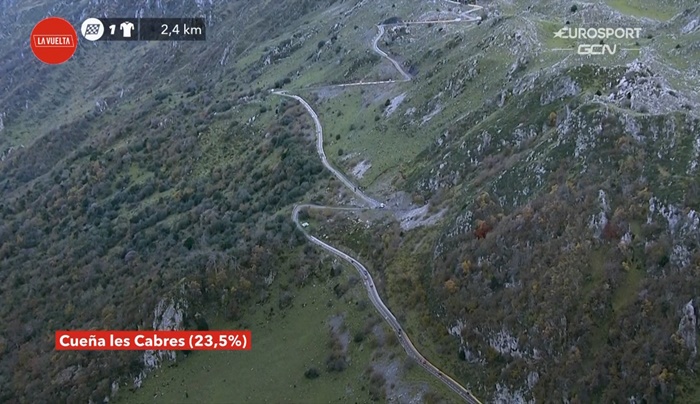
Dan Martin was the first to watch his rivals almost imperceptible inch away from him. A cruel feature of a climb this steep is that you lose touch only very slowly. You see the gap opening for an eternity – you just can’t do anything about it. In fact you’re moving so slowly that you can be a minute behind the rider ahead and they’ll still be well within view.
Martin was detached with 3.5km to go, at which point there were just six riders ahead of him.
However, the other feature of a climb like this is that everyone’s having a terrible time and no-one’s racing away at incredible speed. It turned out Martin was calibrating his effort carefully and with 2.5km to go he was back with everyone.
Then things got really steep.
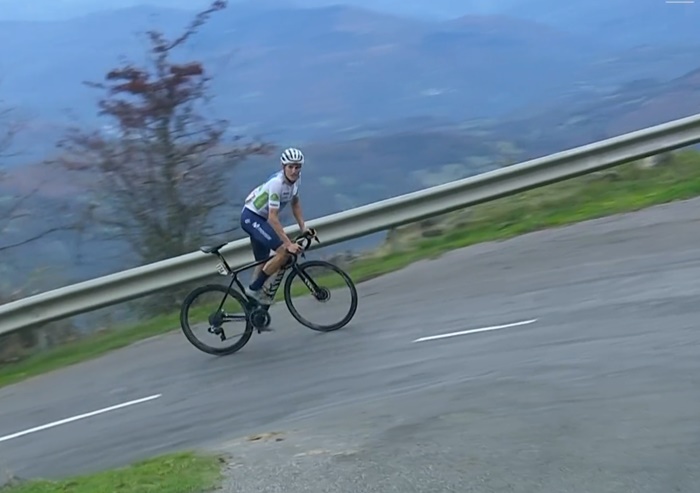
With 2km to go, Carapaz did an actual attack rather than just riding slightly more quickly, which is a move that works perfectly well on the Angliru.
Carthy, Vlasov and Enric Mas managed to stick with him. Roglic did not.
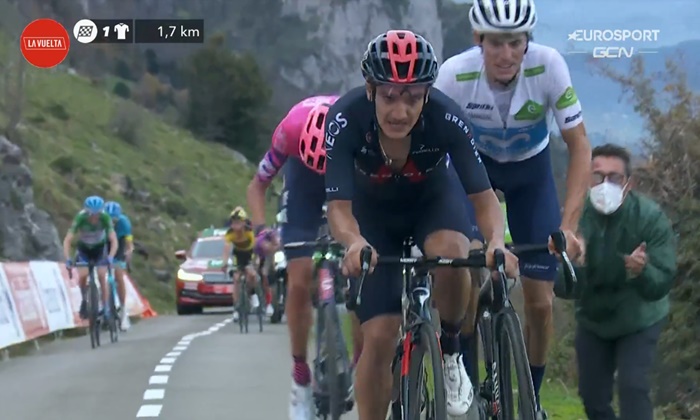
The winner was going to come from those four and with 1.3km to go, Carthy opted for the riding-slightly-more-quickly move and started to ease away.
And away.
And away.
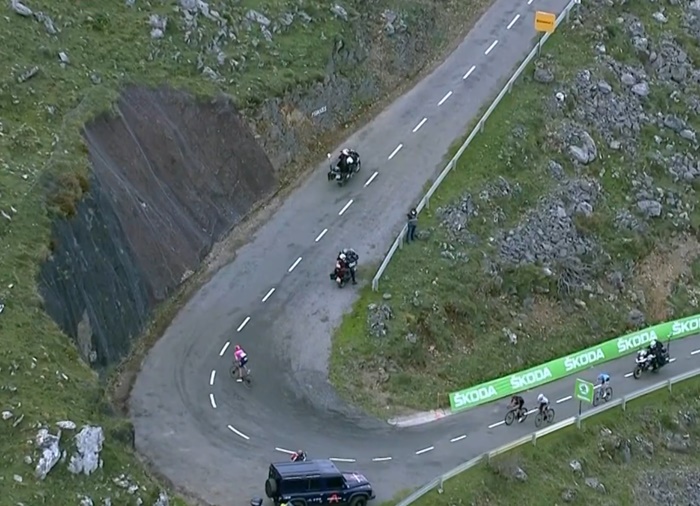
The Briton had a 16 second advantage at the top and moved into third overall.
The trio behind had another 10 seconds on Roglic, which meant Carapaz took back the race lead.
Speaking afterwards, the Ecuadorian called it “quite a hard stage” before swiftly clarifying that it was “horrible”.
Here’s where things stand ahead of the final week.

It’s a top five really, innit? Not many mentions of Dan Martin here, but he’s still well in the mix.
What’s next?
Unlike the Giro, which suddenly became about 10 times harder in the final week, the Vuelta almost eases to a climax relative to what’s come before.
There are two big, obvious stages where there should be meaningful time gaps. Stage 13 on Tuesday is a 33km time trial that – because it’s the Vuelta – finishes with a 1.8km 15% climb, while Stage 17 on Saturday is a conventionally hard summit finish.
Then you’ve got Stage 18 on Sunday, which is the unremarkable sprint stage to finish, and Wednesday, Thursday, Friday which are generically hilly and where honestly anything could happen.
I’ll bring you a recap this time next week.
Please sign up for the email to get that and also to avoid missing whatever eventually follows if and when next season gets underway at some point in 2021.
Leave a Reply